Dark Souls Trilogy for PlayStation 4: Everything you need to know
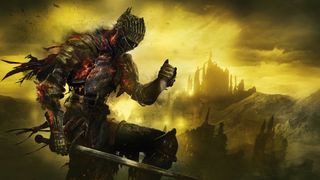
You can't talk about challenging video games without someone inevitably mentioning Dark Souls. This classic series began its life on last generation consoles, but now Bandai Namco is bringing the trilogy to PlayStation 4. If you never played them the first time around, now you can get in on the action and see just for yourself why everyone can't stop talking about its difficulty.
Triple the torture
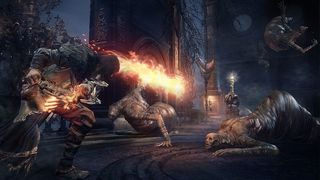
The Dark Souls Trilogy bundles up Dark Souls: Remastered, Dark Souls II, and Dark Souls III: The Fire Fades. Each of these will be complete with their respective DLC content packs that released over the years. Dark Souls: Remastered will include Astorias of the Abyss, Dark Souls II will contain The Lost Crowns DLC pack that spans three individual chapters, and Dark Souls III: The Fire Fades will include the Ashes of Ariandel and The Ringed City expansions.
Story
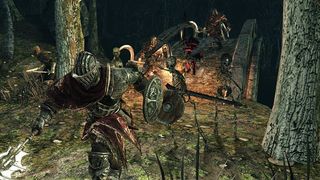
Piecing together the series' story and lore is difficult, to say the least. Though they take place within the same dark fantasy universe, each sequel does not directly continue its predecessor's narrative. Instead of presenting a cohesive story through various cutscenes, the Souls series allows its environment to do the talking for it. Through dialogue, item descriptions, and visuals players are given information with which they can start to understand what's happening in the universe.
Long ago the realm was desolate, neither humans nor fire existed, though dragons ruled the land. After fire first appears in the world at the First Flame, four powerful beings known as Lord Souls rise up and defeat the dragons to usher in the Age of Fire, which gives rise to humanity. With the passage of time, the First Flame begins to dwindle. In Dark Souls, players control a cursed undead character as they journey through a bleak kingdom to fulfill a prophecy that will rekindle the First Flame and continue the Age of Fire.
Dark Souls II once again features an undead character who is this time on a journey to break the curse that will cause them to turn into a Hollow, a husk of a being with no memory or desires. Players are tasked with collecting four Great Souls to do so.
Dark Souls III follows a similar premise to that of the first Dark Souls. The First Flame is dying out but the man tasked with performing the ritual to sustain it has decided to instead let nature take its course, thus embracing the Age of Dark, a cursed time wrought with undead beings. Players take on the role of the Ashen One, and must gather together those who have shirked their duty to keep the flame alive.
Gameplay
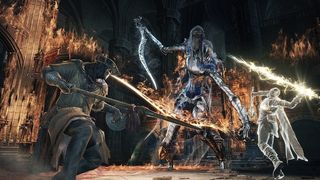
Neither FromSoftware nor Bandai Namco are making any changes to the series' core gameplay mechanics with the trilogy release.
Be an expert in 5 minutes
Get the latest news from Android Central, your trusted companion in the world of Android
The entire series strongly focuses on exploration and learning from your past experiences. You walk into a room and instantly get killed? Now you know not to walk through there. Dark Souls teaches you the hard way, and won't hold your hand to guide you.
While lessons can be learned from death, there can also be penalties as well. Not only can you lose the souls you have collected—which is your main form of currency and used to upgrade your gear, level up, and more—but your maximum health can also be reduced to a certain extent.
As for its combat, Dark Souls is known to be unforgiving. You're given swords, bows, and shields with which to fight, but your enemies—especially bosses—are exceptionally hard to defeat. You'll likely be doing small amounts of damage at a time as you dodge out of its way and deflect its attacks. It's almost like a dance in that sense. Once you get the rhythm down, provided that you aren't totally underpowered, you should find success.
Graphics and performance
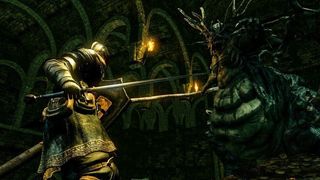
Dark Souls: Remastered runs at 1080p on a standard PlayStation 4, but its resolution is increased to 1800p on the PlayStation 4 Pro. No matter which console you play on, frame rate is locked most of the time at 60FPS, though certain boss fights see it fall to 30FPS.
Dark Souls II received a remastered edition a few years ago known as Dark Souls II: Scholars of the First Sin. In this edition the graphics and performance were once again bumped up to 1080p at 60FPS, which is what you should be seeing in the Dark Souls Trilogy.
Dark Souls III, despite being the newest entry in the series, actually runs at a lower frame rate of only 30FPS on a standard PlayStation 4. This was improved after an update unlocked its frame rate to give it a little boost, but not by much. If you happen to play it on a PlayStation 4 Pro, you'll be getting around 40FPS most of the time, though you can hit its 60FPS cap if you're lucky. Its resolution is also 1080p.
When can you play it?
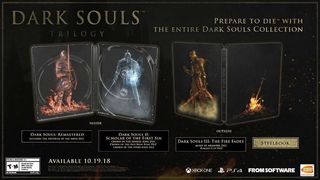
The Dark Souls Trilogy is set to release on October 19, 2018 at physical retail. It will only be available in American and Asian markets. Be prepared to shell out a little more cash than usual as this compilation is going to be priced at $79.99, but it also comes in a sleek exclusive steelbook.

Jennifer Locke has been playing video games nearly her entire life. You can find her posting pictures of her dog and obsessing over PlayStation and Xbox, Star Wars, and other geeky things.
